 |
 |
 |
| |
48 Wk Efficacy and Safety of Switching Virologically Stable HIV-1 Patients from Nevirapine IR 200 mg BID to Nevirapine XR 400 mg QD (TRANxITION)
|
| |
| |
Reported by Jules Levin
Glasgow Nov 7-11 2010
K. ARASTEH1, D. WARD2, A. PLETTENBERG3, JM. LIVROZET4, A. WINSTON5, C. CORDES6, E. WANG7, A. QUINSON7
1 EPIMED c/o Vivantes Auguste-Viktoria-Klinikum, Berlin, GER; 2Dupont Circle Physicians Group, Washington DC, US; 3Asklepios Klinik St. Georg, Hamburg, GER; 4H˘pital Edouard Herriot, Lyon,
FRA; 5St Mary's Hospital, London, UK; 6EPIMED c/o Private Practice, Berlin, GER; 7Boehringer Ingelheim Inc, US.

* Please note VIRAMUNE® XR is not yet available for use.
Abstract
Background: Non-inferior efficacy and a similar safety profile were reported at 48 weeks for extended release nevirapine (NVP XR) once-daily (QD) compared with immediate release nevirapine (NVP IR) twice-daily (BID), in a double-blind trial in treatment-na´ve patients (the VERxVE study). Similarly, TRANxITION study 24 Wk data, in treatment-experienced patients switched from NVP IR BID to NVP XR QD, demonstrated non-inferior efficacy to patients continuing on NVP IR BID. Wk 48 efficacy and safety data from the TRANxITION study are now presented.
Methods: Open label, randomized (2:1), non-inferiority, parallel group study comparing NVP XR 400 mg QD with NVP IR 200 mg BID in HIV-1 patients >18 years receiving NVP IR plus one of three NRTI combinations, with viral load (VL) <50 copies/mL. Patients remained on their previous background therapy for treatment duration. Sustained virologic response (VL <50 copies/mL) was assessed at Wk 48 using the time-to-loss of virologic response (TLOVR) algorithm.
Results: A total of 443 patients were treated and 423 completed 48 wks of treatment: n=281 (95.3%) for NVP XR and n=142 (95.9%) for NVP IR treatment groups. Mean baseline CD4+ counts: 557.7 cells/mm3 and 569.7 cells/mm3, for NVP XR and NVP IR respectively. 48 Wk data are reported below. Non-inferiority of virologic suppression was achieved using a TLOVR and snapshot analysis.
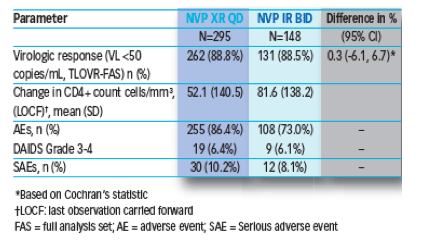
AEs were mostly mild to moderate in both groups with a higher reported rate of gastrointestinal AEs in the NVP XR group. The proportion of patients with DAIDS Grade 3/4 AEs was similar in the NVP XR and NVP IR groups.
Conclusions: At Wk 48, non-inferior efficacy between the NVP XR 400 mg QD and NVP IR 200 mg BID groups was sustained. No unexpected adverse events (AEs) were observed at Wk 48. These data support the switch from NVP IR to NVP XR in treatment-experienced patients who are stable on their former treatment regimen.
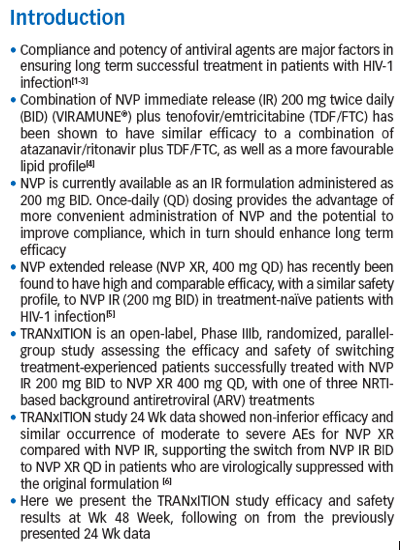
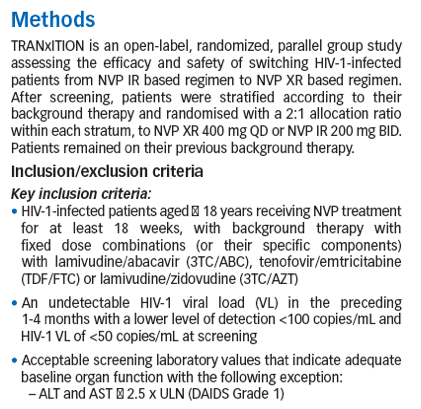
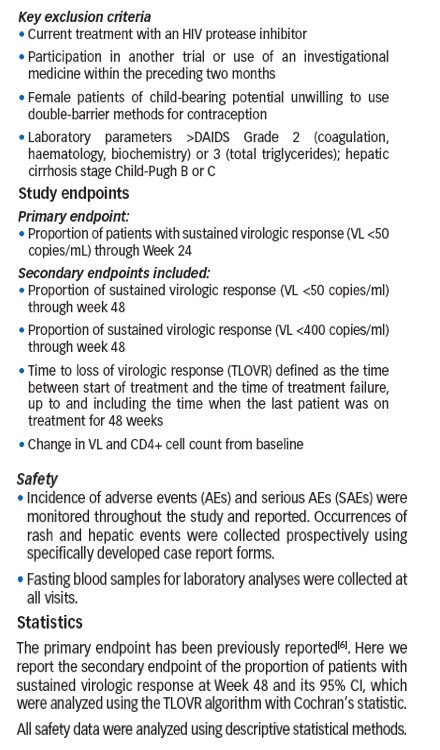
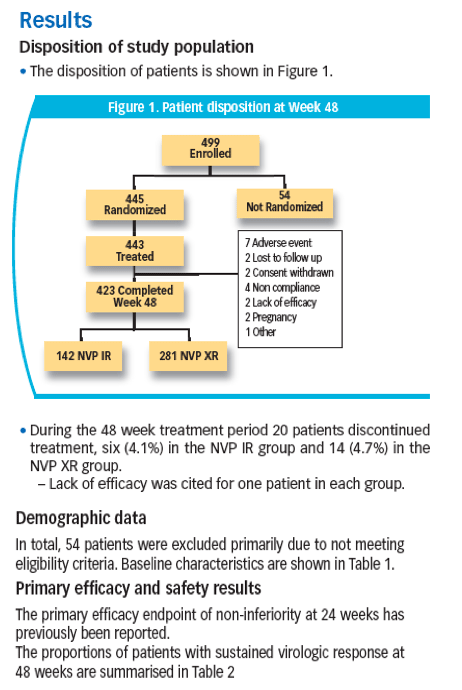
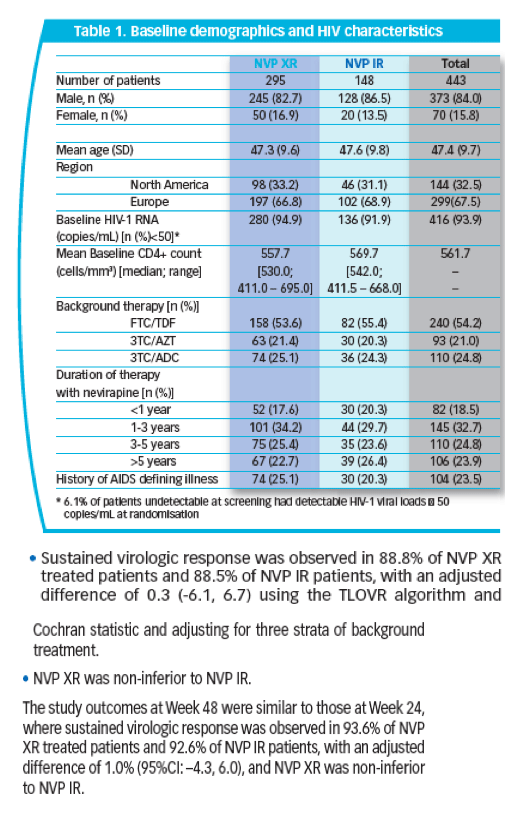
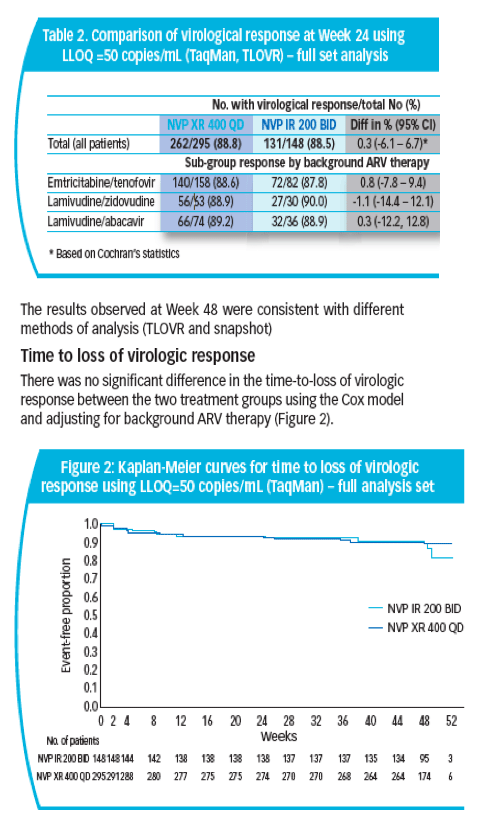
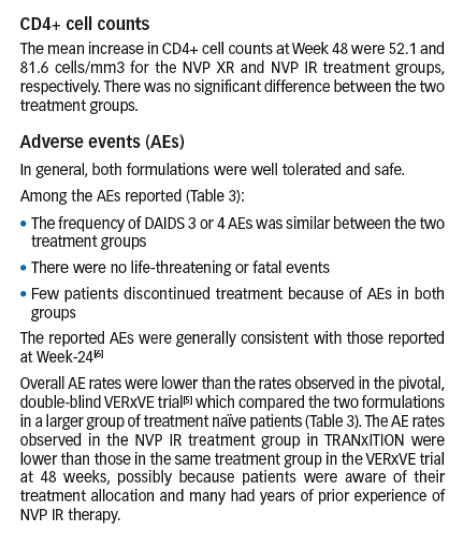


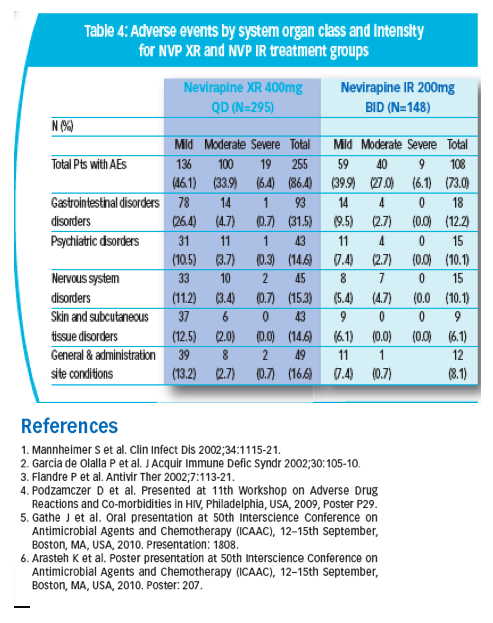
|
| |
|
 |
 |
|
|